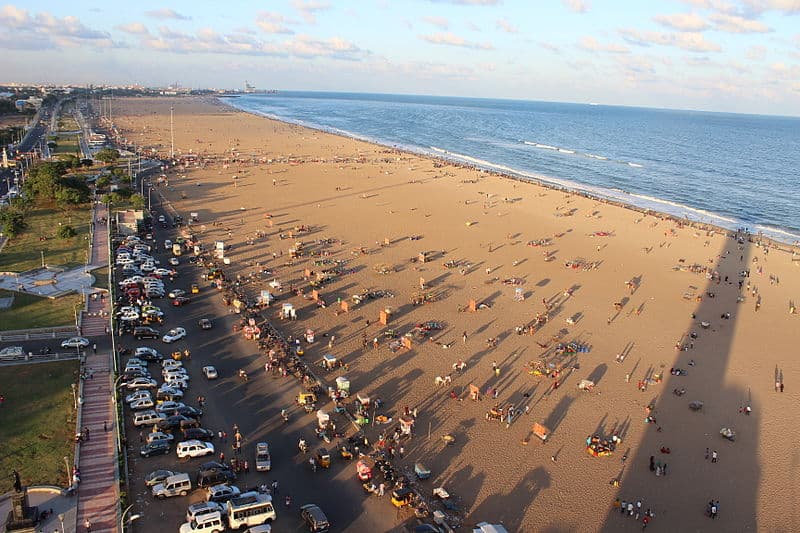A new Mayor and Council are in place at Ripon Buildings. And in keeping with that there is plenty of hope. The Worshipful Mayor, in keeping with the ideology of her party, has resurrected the Singara Chennai slogan.
A new plan had earlier been unveiled by the Chief Minister under the name Singara Chennai 2.0. There is no doubt that the Mayor and Council will focus on making that vision a reality, given that she is from the same political party. And there is no doubt the opposition will protest, chiefly because it is the ruling party’s idea. The interests of the city always pale before party loyalties.
While we wish the new Mayor and her team all success in this, we feel that this is an appropriate time to look back and see what happened to Singara Chennai 1.0. It is necessary to point out here that 2.0 has a lot of 1.0 in it, thereby pointing to an unfinished agenda.
Read more: What is needed to make the Rs 500-crore Singara Chennai 2.0 a success
Birth of Singara Chennai
It was in 1996, when the present CM was then newly elected as Mayor of the city, that Singara Chennai was first coined as a slogan and a plan. Aiming to make the metropolis another Singapore, the concept was quite comprehensive in its coverage. It looked at mitigating traffic problems by building grade separators, allotting designated zones for vendors, waging war on posters and defacement of public walls, maintaining parks and green zones, reviving the city’s waterbodies, ensuring proper drainage, and beautifying public spaces.
Among all of these, the grade separators or flyovers as they are better known, are perhaps the only surviving evidence of Singara Chennai 1.0. Yes, it is true that parks have been better maintained ever since, but if we consider that some parks have also vanished either in part or in full to make way for the Metro, we cannot assign much of a score on that count.
Partially fulfilled objectives
As for the rest, we are pretty much back at square one and our journey to becoming Singapore has not yet got off to a start. Sometime in 2010, the present CM, then the Dy CM, claimed that Singara Chennai 1.0 had achieved 50 per cent of its objectives. Unfortunately, the exact details behind such a claim where never publicised.
It is of course easy to blame the democratic system of electing a Corporation Council every five years for this. As and when the ADMK came to power in the State and in the city council, it pigeonholed Singara Chennai. Thus, we saw no action on this project from 2001 to 2006 and once again from 2011 to 2022.
Those were long hiatuses indeed. While it is a pity that a city needs to suffer owing to conflicting political viewpoints, we need to accept that as reality. Perhaps the current dispensation will prove to be a gamechanger by looking at what needs to be done and not focus on what it can negate of the previous regime.
Read more: New plans for Singara Chennai raise hope among citizens

What it would take to make Singara Chennai
Singara Chennai 2.0 has an advantage over 1.0 – the advent of technology. This is when the city administration can focus on plenty of apps to make life easy for its citizens. Such concepts did not exist in 1996. There have been some steps taken under the Smart City initiative to utilise apps, but they have not yet proved their efficacy.
It is also absolutely necessary for the Corporation to make the State Government realise that it has to have a greater say in the activities of other bodies such as the CMWSSB, the CMRL, the PWD and the CUMTA, all of which have an impact on the city’s infrastructure but do not come under the Corporation. In the absence of coordinated activity among these agencies, Singara Chennai 2.0 is bound to come a cropper.
Lastly, given that there is every chance of a regime change in future putting such a project on the backburner, it is necessary for the civic body and the State Government to consider ring fencing the funds allotted for Singara Chennai 2.0 so that the money cannot be taken for some other activity. That way we can at least ensure that a project remains on track no matter who takes office.
[This story was first published on Madras Musings. It has been republished with permission. The original article can be found here.]
Sriram, what is the point of unveiling such initiatives when, as you rightly point out, most authorities/boards that provide public services in Chennai have little or no connection to GCC/Mayor/Commissioner? How can GCC be expected to do anything when water, electricity, buses, metro, MRTS, etc., are outside their hands?
I would seriously like to see some financing reform that puts some part of GST directly into the municipality’s hands. After all, almost all transaction happen within the boundaries of some Urban Local Body. Why is there only a split between State and Centre? Why should the city have to go begging for alms from the state and centre instead of having its own revenue-generating mechanism?
Right now, most parastatal organisations such as MTC and CMWSSB have zero accountability at the city level (at least officially, I don’t know how these things work behind the scenes). How can “Chennai” Metrowater Supply and Sewerage Board report up to the Chief Minister and NOT the Mayor or Corporation Commissioner? What is the logic here, I fail to understand.
Apart from this, the city ran for 5 years without an elected body. Were those 5 years particularly different from the 5 before it when there were ward councillors? Genuinely asking, I wasn’t around in Chennai, so I don’ know. But I suspect there wasn’t much difference. Which suggests that bureaucrats ran the show before and after with ZERO electoral accountability.